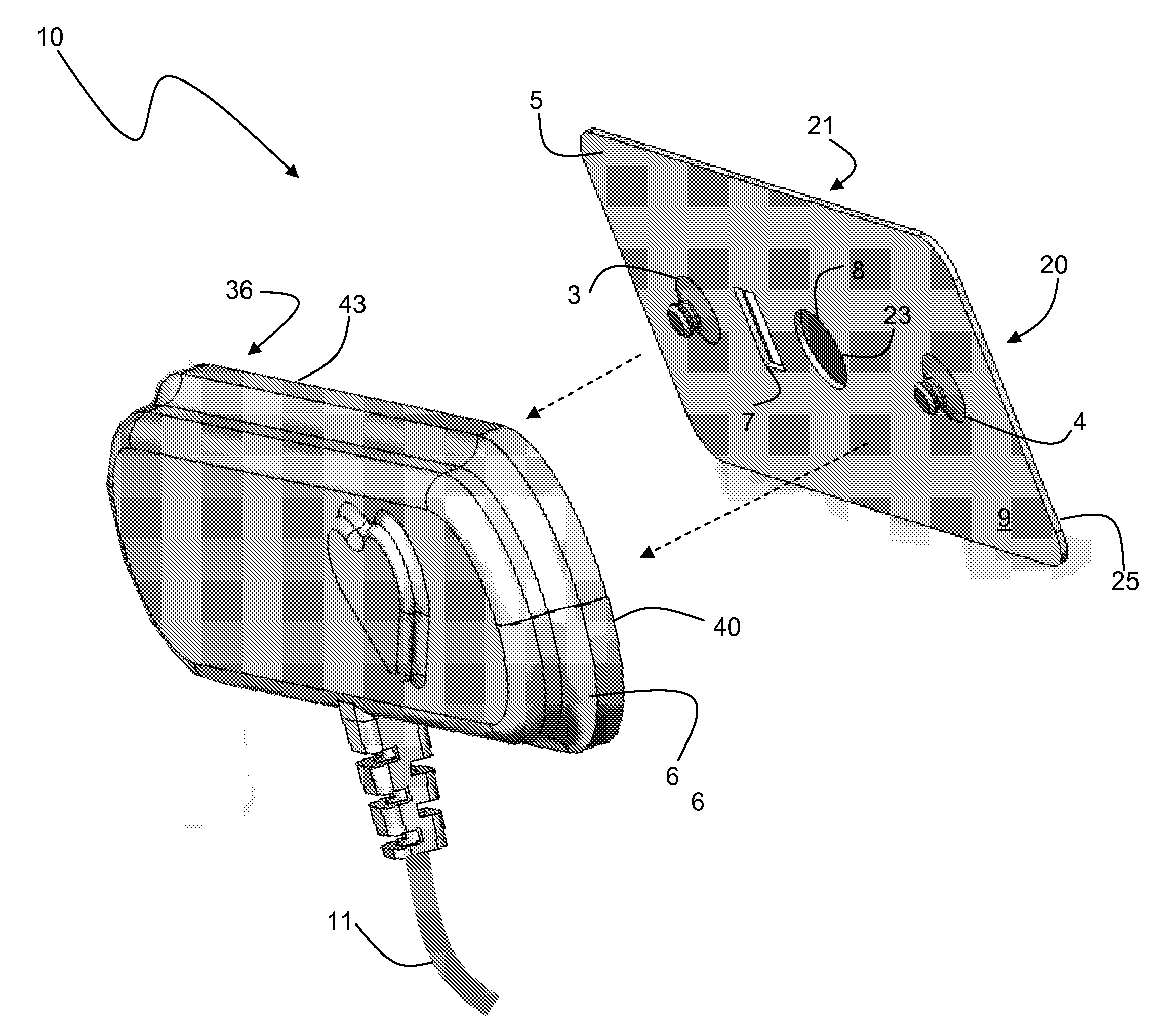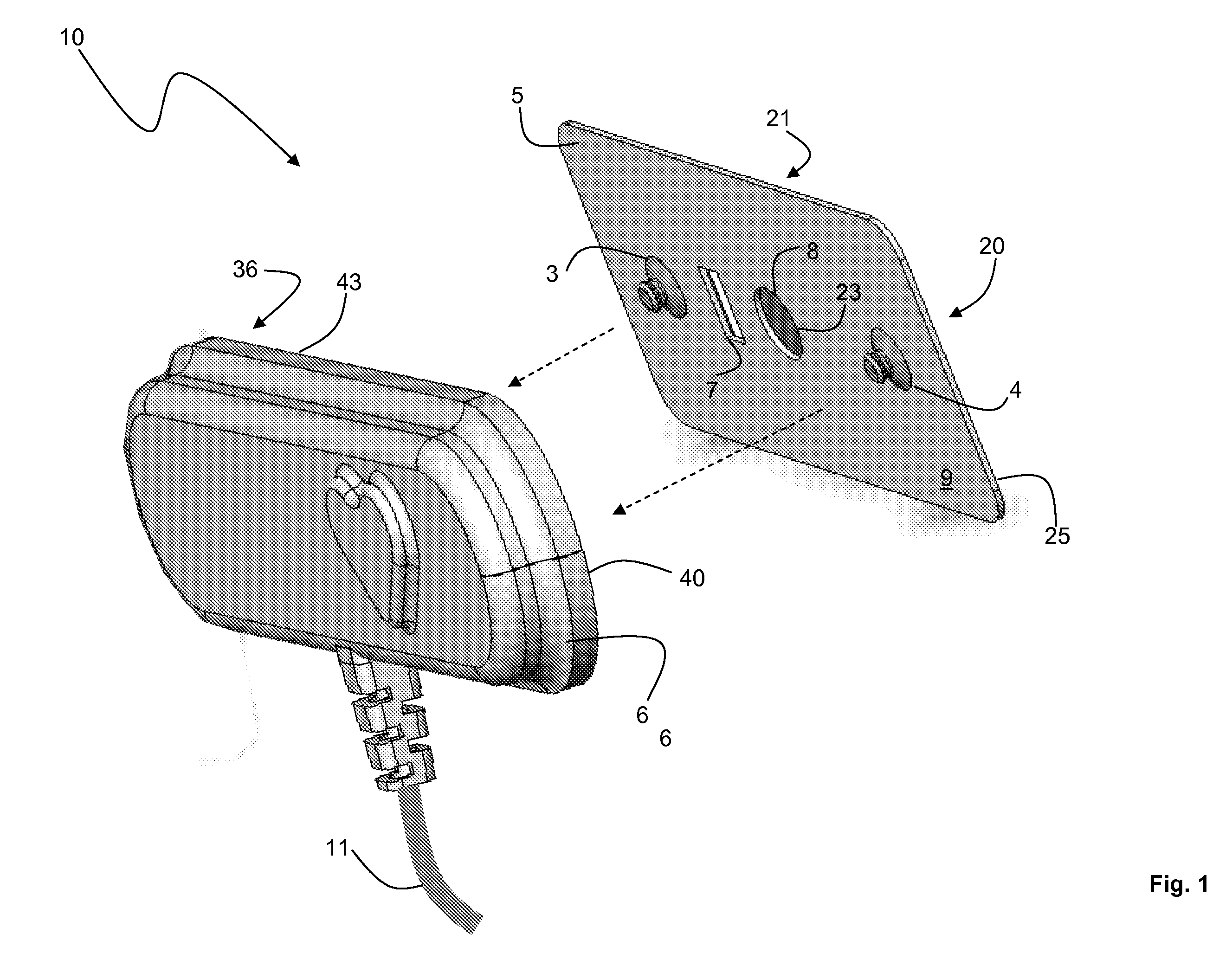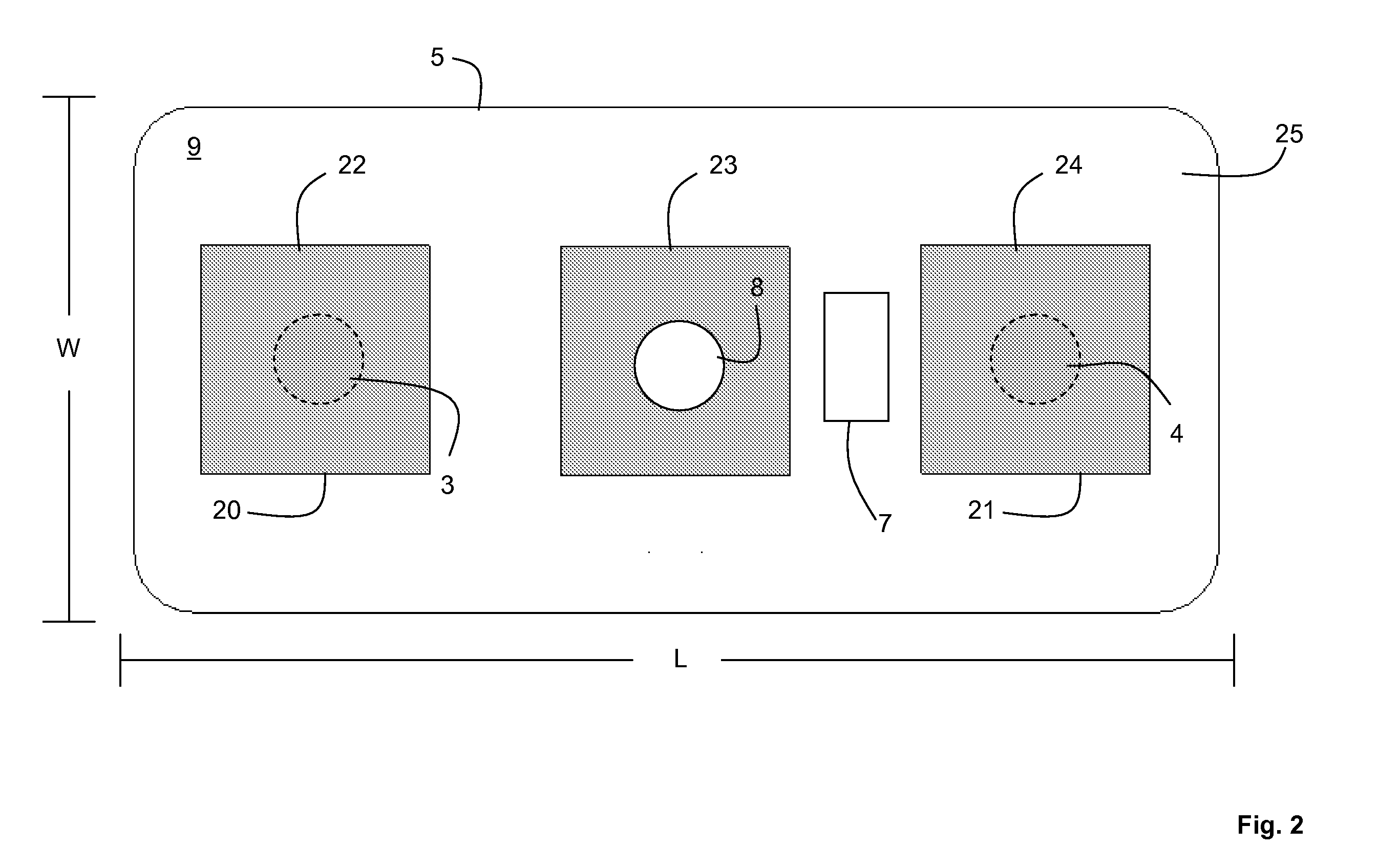Two-part patch sensor for monitoring vital signs
a technology of vital signs and patch sensors, which is applied in the field of medical devices for monitoring vital signs, can solve the problems of complicated ptt-based blood pressure measurement, short ptt, and inability to accurately measure blood pressure, and achieves quick blood pressure measurement and little or no discomfort for patients
- Summary
- Abstract
- Description
- Claims
- Application Information
AI Technical Summary
Benefits of technology
Problems solved by technology
Method used
Image
Examples
Embodiment Construction
[0034]FIGS. 1, 2, and 3 show a two-part patch sensor 10 according to the invention that features a disposable adhesive patch sensor 5 that attaches to a non-disposable sensor housing 6 to measure optical, electrical, and acoustic waveforms from a patient's chest. The optical, acoustic and electrical waveforms represent, respectively, capillary blood flow, mitral and aortic valve closures, and electrical activity generated by the patient's heart. A cable 11 containing a shielded wire for each signal transports the waveforms to a main console (the components of which are shown in FIG. 8) that processes them to measure a patient's vital signs, particularly blood pressure. One such processing technique, for example, is described in detail in co-pending U.S. patent application Ser. No. 11 / 470,708, entitled Hand-Held Vital Signs Monitor, filed Sep. 7, 2006, the pertinent contents of which are hereby incorporated by reference.
[0035]The patch sensor 5 features a sterile backing 9 composed o...
PUM
 Login to View More
Login to View More Abstract
Description
Claims
Application Information
 Login to View More
Login to View More - R&D
- Intellectual Property
- Life Sciences
- Materials
- Tech Scout
- Unparalleled Data Quality
- Higher Quality Content
- 60% Fewer Hallucinations
Browse by: Latest US Patents, China's latest patents, Technical Efficacy Thesaurus, Application Domain, Technology Topic, Popular Technical Reports.
© 2025 PatSnap. All rights reserved.Legal|Privacy policy|Modern Slavery Act Transparency Statement|Sitemap|About US| Contact US: help@patsnap.com



